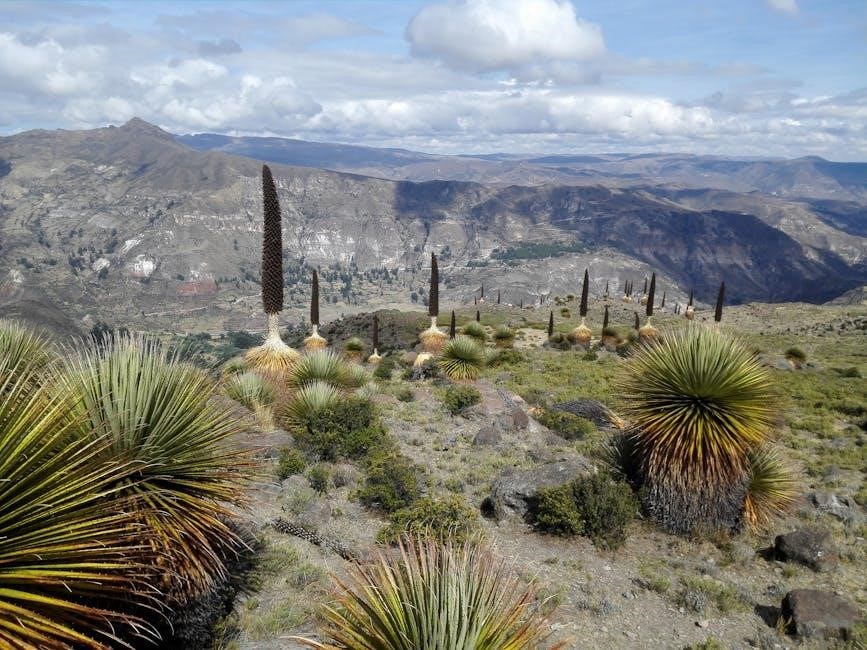Capitulación de Ayacucho: A Comprehensive Overview
The Capitulation of Ayacucho, signed after the Battle of Ayacucho on December 9, 1824, marked the surrender of Spanish forces in Peru. This agreement, between José de Canterac and Antonio José de Sucre, recognized Peruvian independence, ending years of struggle.
Definition and Significance

The Capitulation of Ayacucho is defined as the treaty signed on December 9, 1824, by José de Canterac, representing the Spanish royalist forces, and General Antonio José de Sucre, commander of the United Liberation Army. This pivotal document formalized the surrender of the Spanish army in Peru, effectively concluding the Peruvian War of Independence and securing independence for much of South America.
Its significance lies in several key aspects. First, it marked the end of Spanish colonial rule in Peru, a struggle that had persisted for seventeen years. Second, it symbolized the triumph of the independence movements across the continent, solidifying the vision of a free and sovereign South America. The capitulation facilitated the transfer of power, stipulating terms for the withdrawal of Spanish troops and recognition of Peru as an independent nation. Furthermore, it addressed the rights and repatriation of Spanish military personnel.
Despite its importance, some Spanish officials rejected the capitulation, arguing that it lacked the signature of Viceroy José de la Serna. Nonetheless, the Capitulation of Ayacucho remains a cornerstone of South American history, celebrated for its role in achieving liberation and shaping the political landscape of the region.
Historical Context of the Battle of Ayacucho
The Battle of Ayacucho, fought on December 9, 1824, unfolded against a backdrop of prolonged conflict between Spanish royalists and South American independence movements. For nearly two decades, these forces had clashed across the continent, with Peru remaining a critical stronghold for the Spanish crown. The battle was the culmination of a series of campaigns aimed at liberating Peru and securing the independence of the region.
Spain, during this period, faced internal turmoil and instability, impacting its ability to effectively maintain control over its colonies. Meanwhile, the independence movements, led by figures such as Simón Bolívar and Antonio José de Sucre, gained momentum, fueled by a growing desire for self-determination. The United Liberation Army, composed of soldiers from various South American nations, converged on Ayacucho, seeking a decisive victory.
The battle itself took place in the highlands of Peru, with Sucre commanding the Patriot forces and Viceroy José de la Serna leading the Royalist army. The Patriot victory at Ayacucho was a pivotal moment, leading directly to the Capitulation, which formalized the end of Spanish rule and the birth of a new era for South America.
Key Figures in the Capitulation
The Capitulation of Ayacucho involved several key figures whose actions and decisions shaped its outcome. On the Patriot side, General Antonio José de Sucre, as the commander of the United Liberation Army, played a pivotal role. His leadership in the Battle of Ayacucho secured the victory that made the Capitulation possible. Sucre, a close associate of Simón Bolívar, was instrumental in the independence movements across South America.
Representing the Spanish Royalists was General José de Canterac, who signed the Capitulation on behalf of the defeated forces. Although Viceroy José de la Serna was the highest-ranking Spanish official in Peru, Canterac held the authority to negotiate and finalize the terms of surrender. His signature marked the formal end of Spanish control over the region.
These key figures, each representing opposing sides in the conflict, were central to the events surrounding the Capitulation. Their roles highlight the complex dynamics of the era and the significant impact of individual leadership on the course of history. While Sucre represented the aspirations of a continent yearning for freedom, Canterac faced the challenge of accepting defeat.
Terms of the Capitulation
The Capitulation of Ayacucho outlined specific terms regarding the surrender of Spanish forces and the recognition of Peruvian independence. A central term involved the Spanish army’s acceptance of Peru’s sovereignty, marking the end of Spanish rule after years of conflict. The agreement stipulated the handover of all Spanish-held territories and strongholds to the Patriot forces, solidifying the newly formed republic’s control over its land.
Furthermore, the Capitulation addressed the status and rights of Spanish soldiers and officials. It guaranteed their safe passage out of Peru and provided for their repatriation to Spain, ensuring their well-being and security. The agreement also allowed Spanish officers to retain their military ranks, even after returning to Spain. This clause aimed to facilitate a peaceful transition and prevent further conflict.
The Capitulation also included provisions regarding Spanish debts and financial obligations within Peru. These terms sought to resolve economic issues arising from the colonial period. They set the stage for future relations between Peru and Spain.
Spanish Recognition of Peruvian Independence
A pivotal outcome of the Capitulation of Ayacucho was the official recognition of Peruvian independence by the Spanish Crown. This acknowledgement marked the end of Spain’s colonial ambitions in the region and solidified Peru’s status as a sovereign nation. The Spanish government, through its representatives, formally relinquished all claims to Peruvian territory.
The recognition of independence had profound implications for Peru, both domestically and internationally. It allowed the newly formed republic to establish diplomatic relations with other countries, fostering trade and cooperation. Peru could now chart its own course without external interference, shaping its political and economic destiny.
Furthermore, Spanish recognition legitimized the sacrifices made by Peruvian patriots during the independence struggle. It validated their efforts to create a free and self-governing nation. The capitulation, facilitated Peru’s transition to nationhood. This recognition paved the way for Peru to join the community of independent nations.
Military Rights and Repatriation

The Capitulation of Ayacucho addressed the rights and repatriation of Spanish military personnel stationed in Peru. It stipulated that Spanish officers and soldiers who wished to return to Spain would be provided with safe passage and the necessary resources for their journey. This provision aimed to ensure a peaceful transition and prevent further conflict.
The agreement also guaranteed certain rights to Spanish military personnel who chose to remain in Peru. They were granted the freedom to live and work in the country, subject to Peruvian law. This clause sought to foster reconciliation and integration between the Spanish community and the newly independent Peruvian society.
The repatriation process was carefully managed to avoid any disruptions or security concerns. The Peruvian government cooperated with Spanish authorities to facilitate the departure of those who wished to leave. Similarly, those who remained were assured of their safety and legal protection. This ensured a smooth transition following the declaration of independence.
Rejection by Some Spanish Officials
Despite the formal agreement outlined in the Capitulation of Ayacucho, not all Spanish officials accepted its validity. Some refused to recognize the terms, primarily because the Viceroy José de la Serna did not sign the document himself. This dissent created pockets of resistance and complicated the full implementation of the capitulation.

The rejection stemmed from a belief that the document lacked legitimacy without the Viceroy’s direct involvement. These officials argued that José de Canterac, who signed on behalf of the Spanish forces, did not have the authority to cede control of the territory or recognize Peruvian independence.
Furthermore, royalist forces in Upper Peru were excluded from the Capitulation of Ayacucho, leading to continued conflict in that region. This exclusion fueled further opposition among Spanish loyalists who felt the agreement did not adequately address their interests or concerns. The lack of universal acceptance posed challenges to achieving complete peace and stability.
Commemoration and Historical Memory
The Capitulation of Ayacucho holds significant historical weight, commemorated annually to honor the end of Spanish rule and the consolidation of Peruvian independence. The Battle of Ayacucho and the subsequent signing of the capitulation are remembered as pivotal moments in South American history, symbolizing the triumph of liberation movements.
Each year on December 9th, Peruvians celebrate the anniversary with various events, including military parades, cultural performances, and civic ceremonies. These commemorations reinforce the national identity and serve as a reminder of the sacrifices made to achieve independence.
The site of the battle, near the city of Ayacucho, is a historical landmark where visitors can explore exhibits and artifacts from the era. The memory of Ayacucho extends beyond Peru, resonating throughout Latin America as a symbol of unity and freedom. This is due to the combined effort in the fight for independence.
The Document’s Location and Access (PDF Availability)
The original document of the Capitulation of Ayacucho is a treasured historical artifact, carefully preserved in national archives. It is available for researchers and historians. Locating the exact repository of the primary document can require specific inquiries to Peruvian national archives or historical societies. These archives are located in Peru.

In the digital age, access to historical documents has expanded significantly, and the Capitulation of Ayacucho is no exception. Digital copies of the Capitulation of Ayacucho are often available in PDF format through various online repositories. These digital versions provide convenient access for researchers, students, and anyone interested in studying this key moment in history.
Repositories include university libraries, historical databases, and government websites. Availability of digital versions depends on copyright and preservation efforts. Ensure the source is credible when accessing digital copies.



